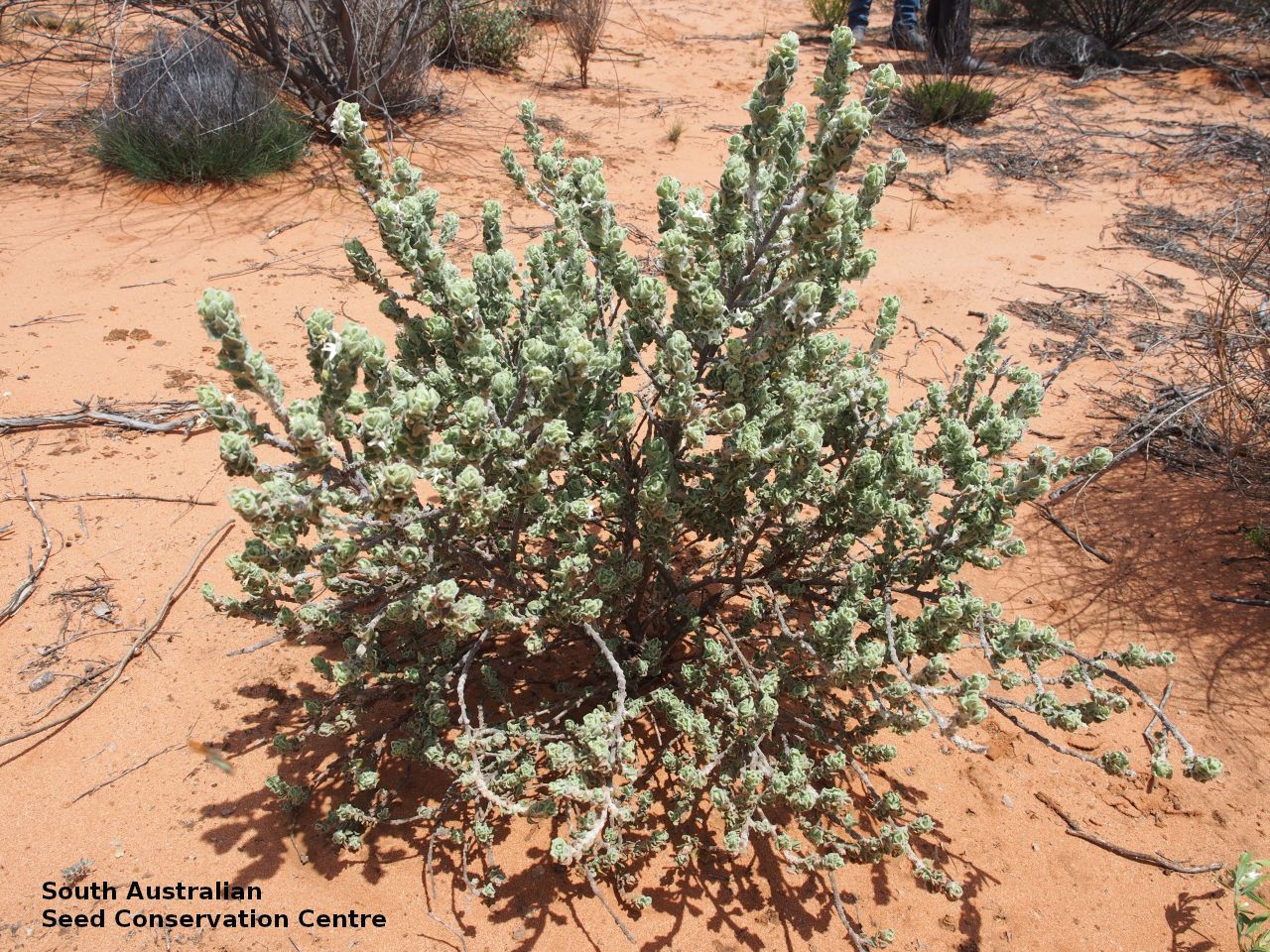
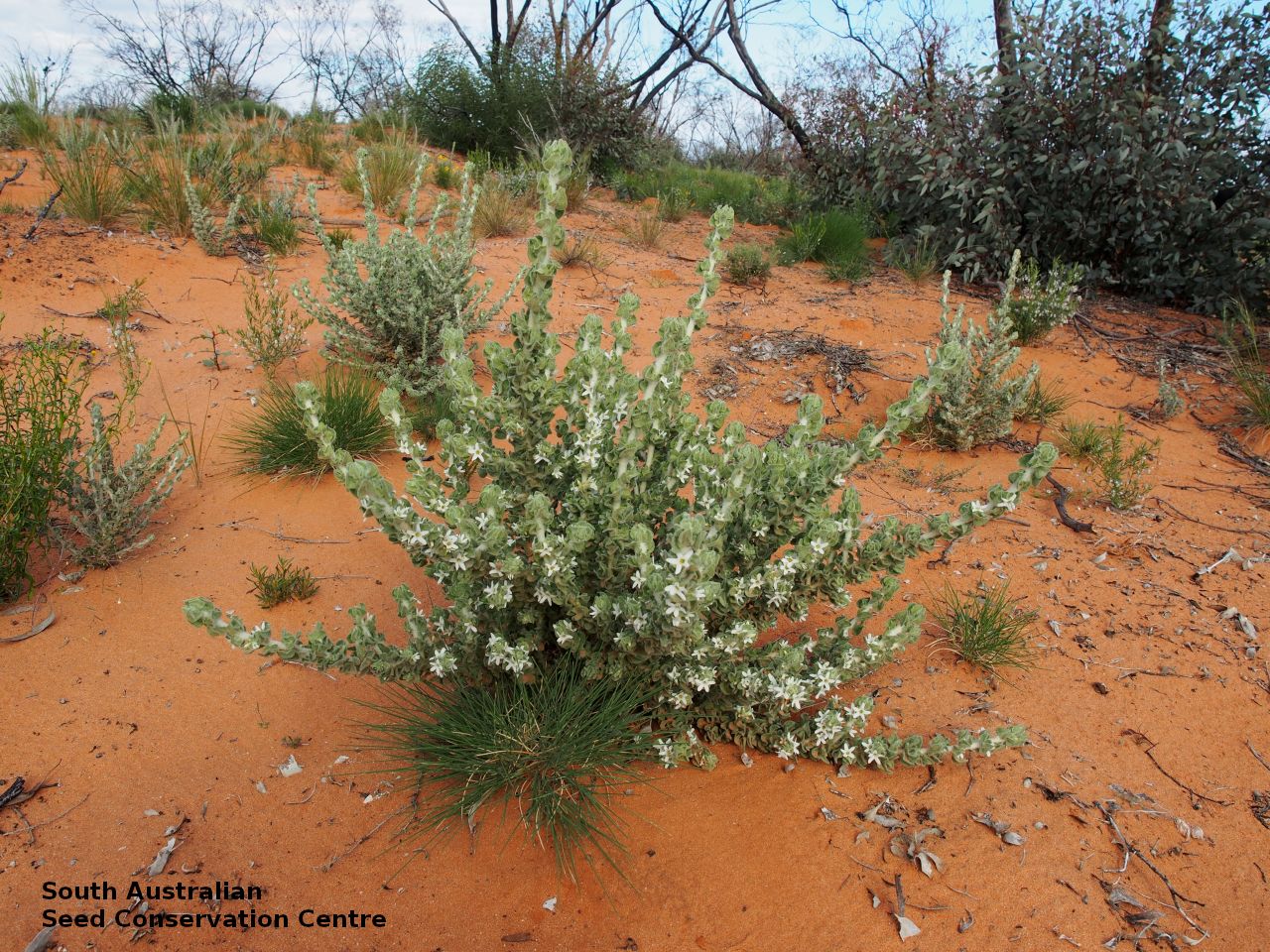
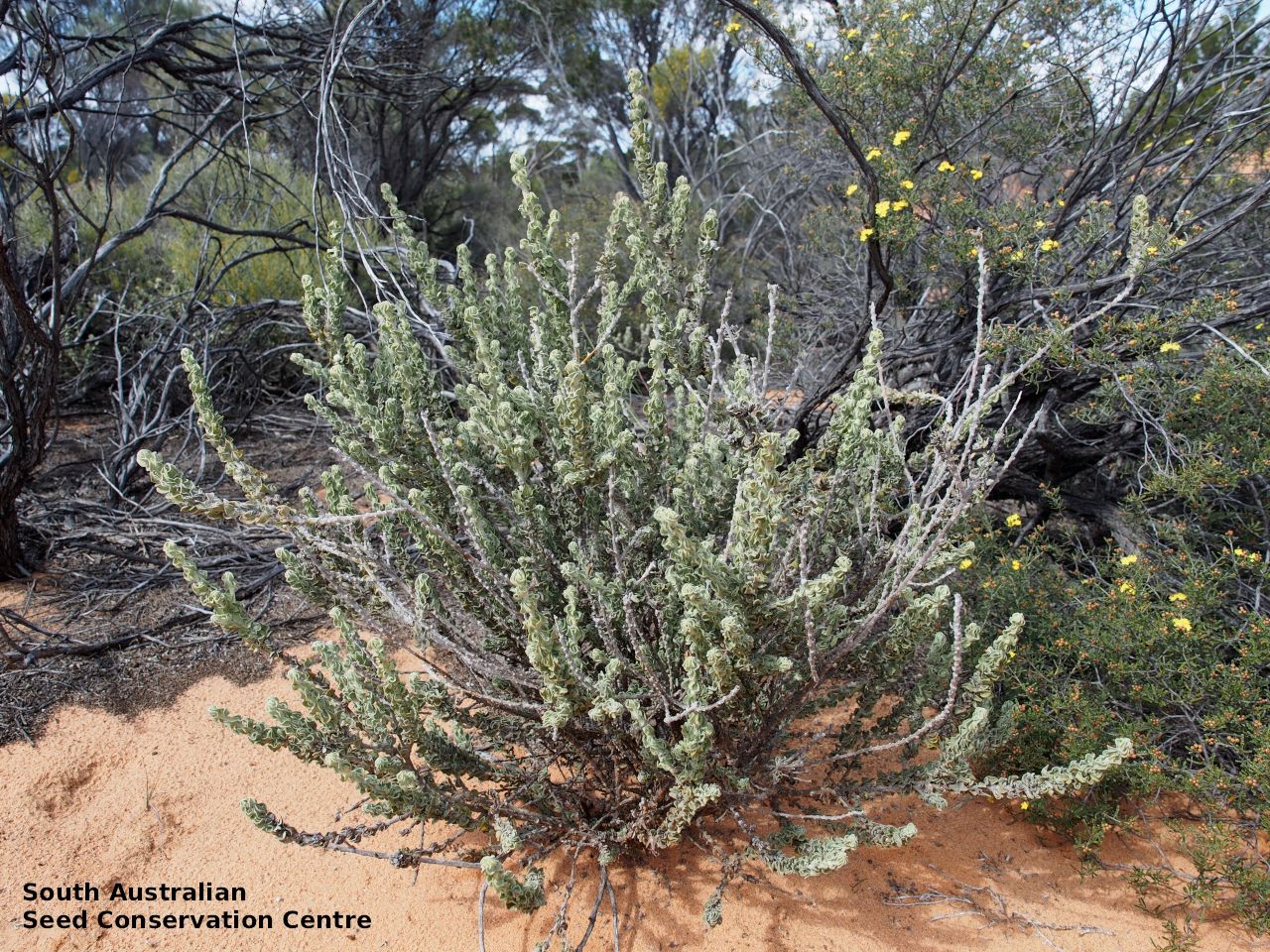
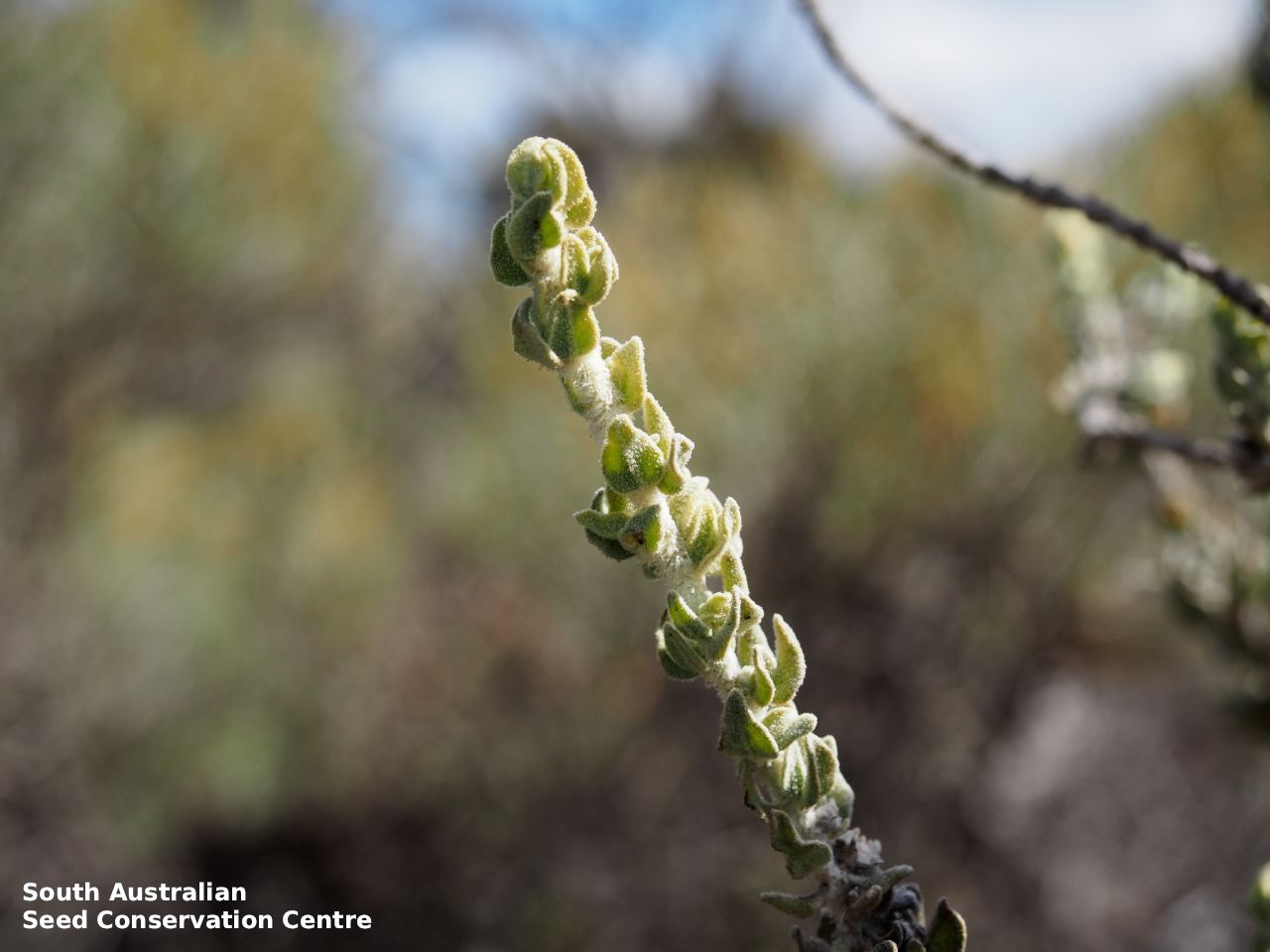
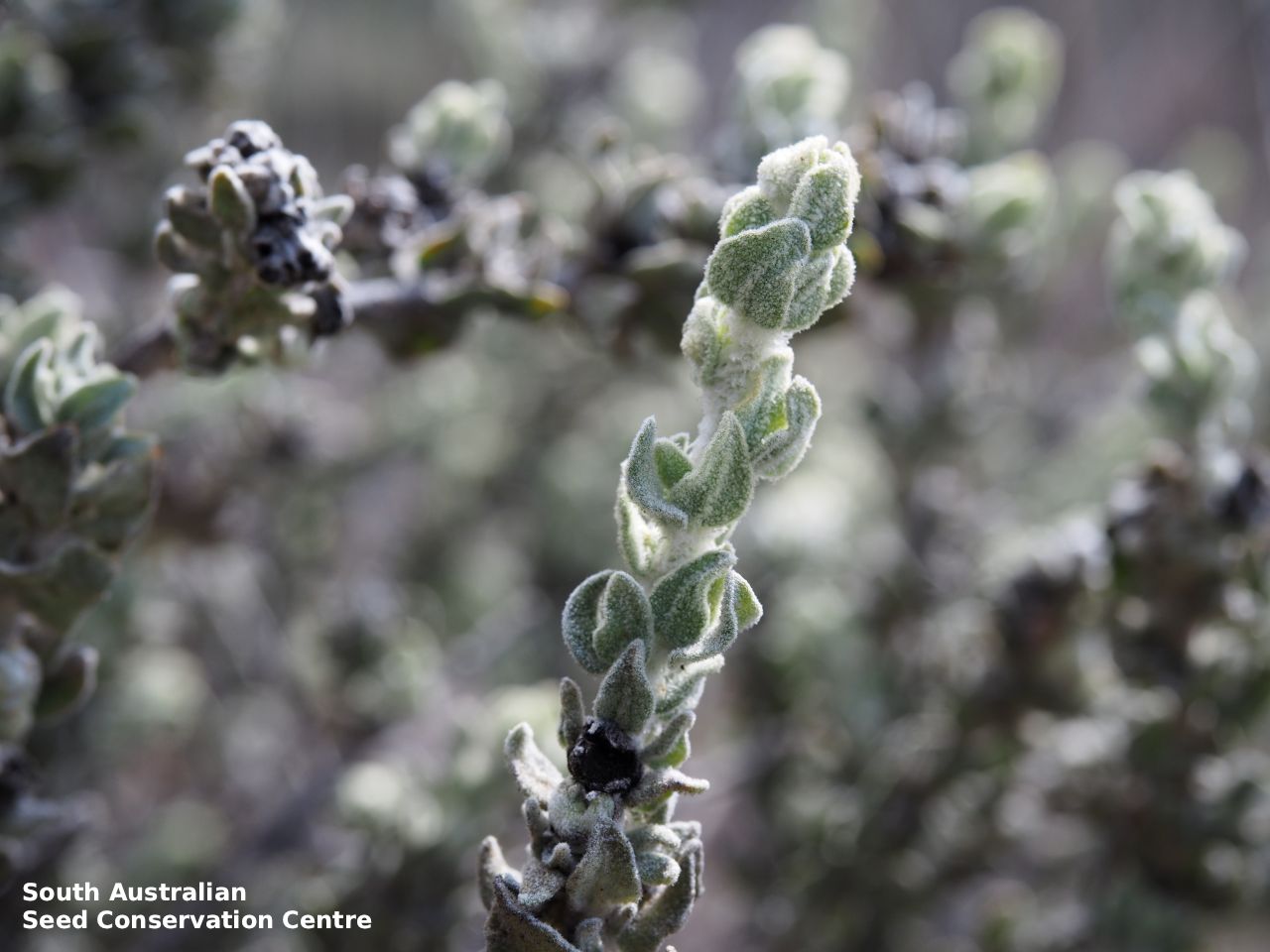
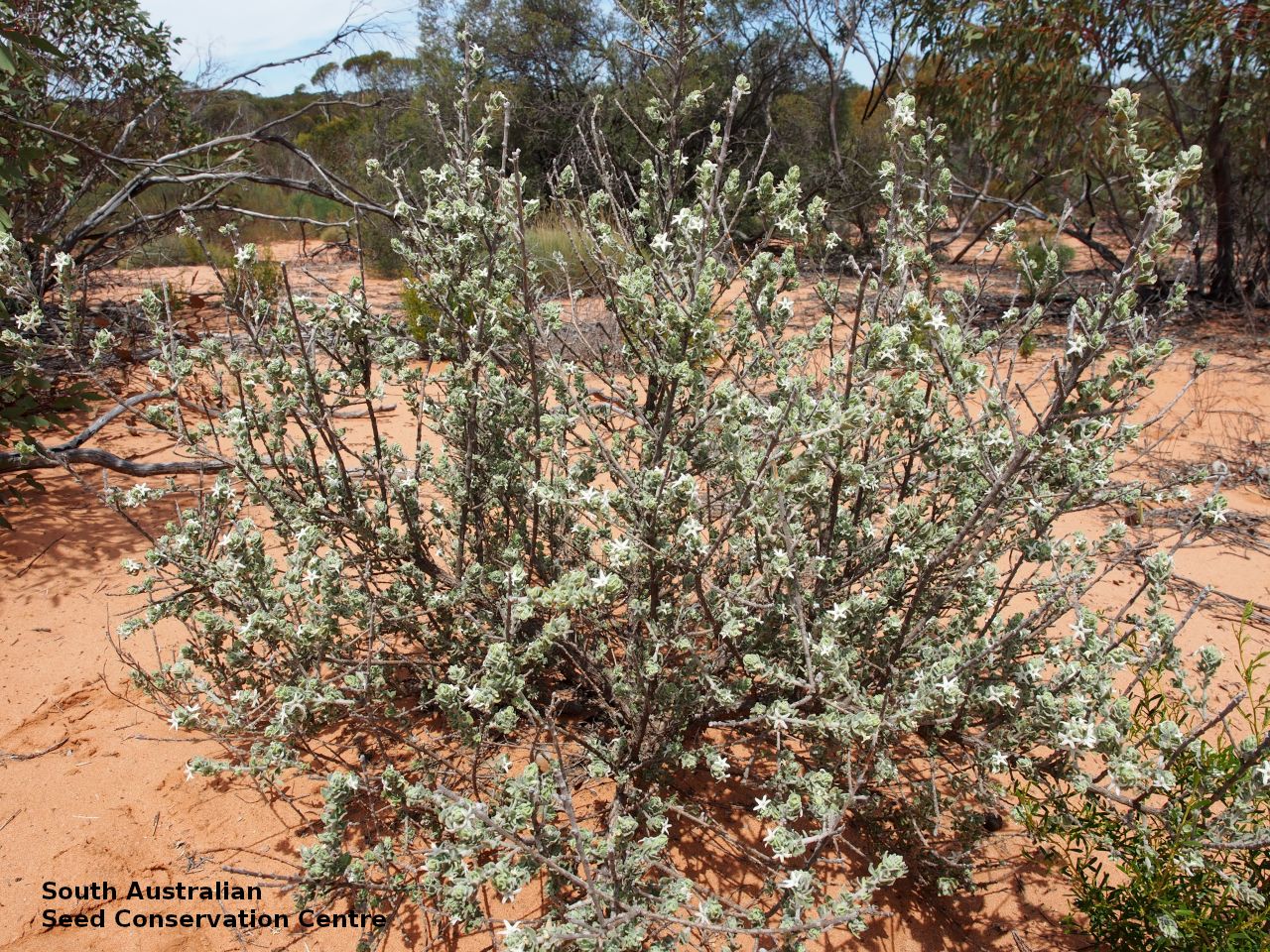
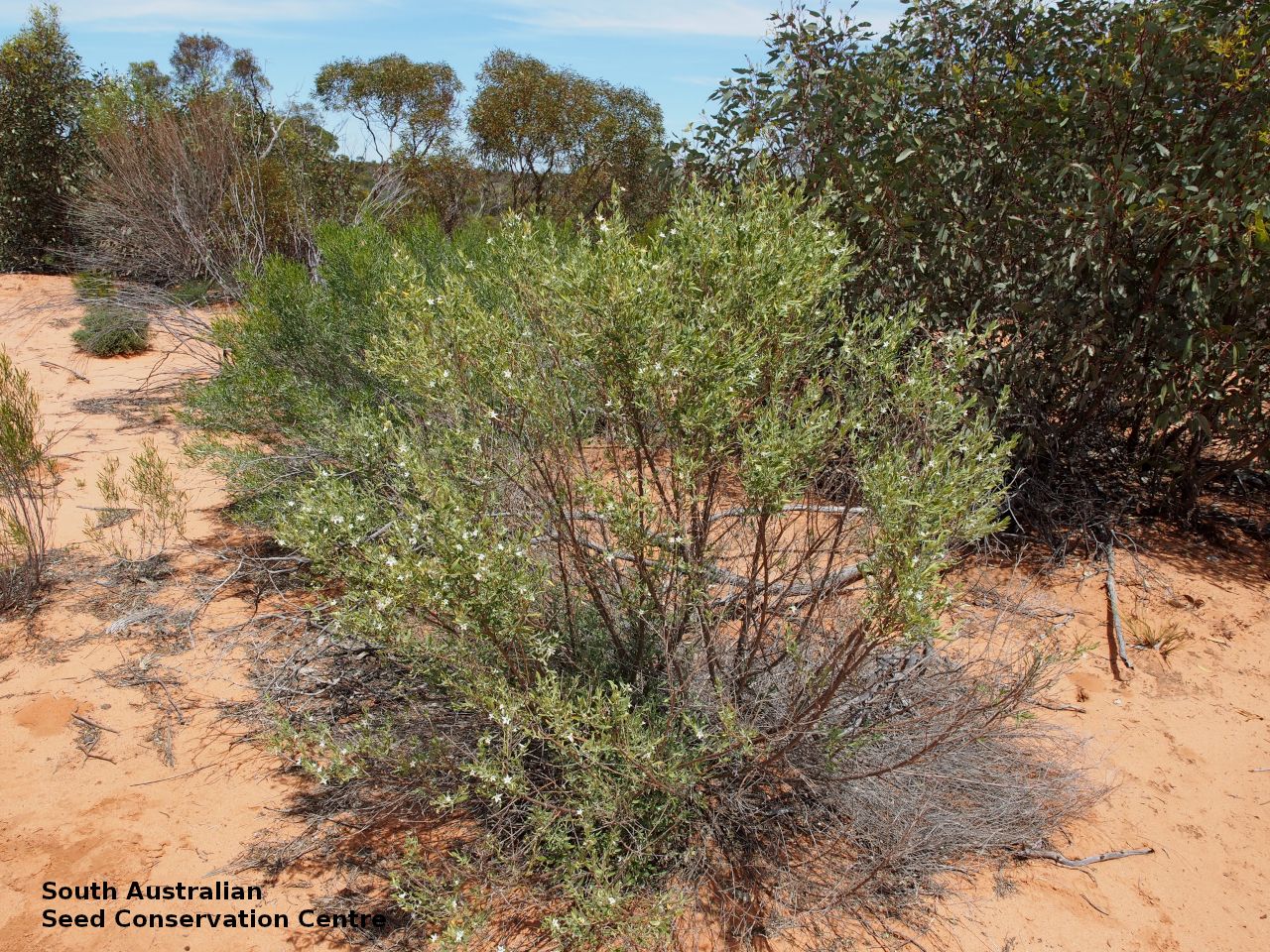
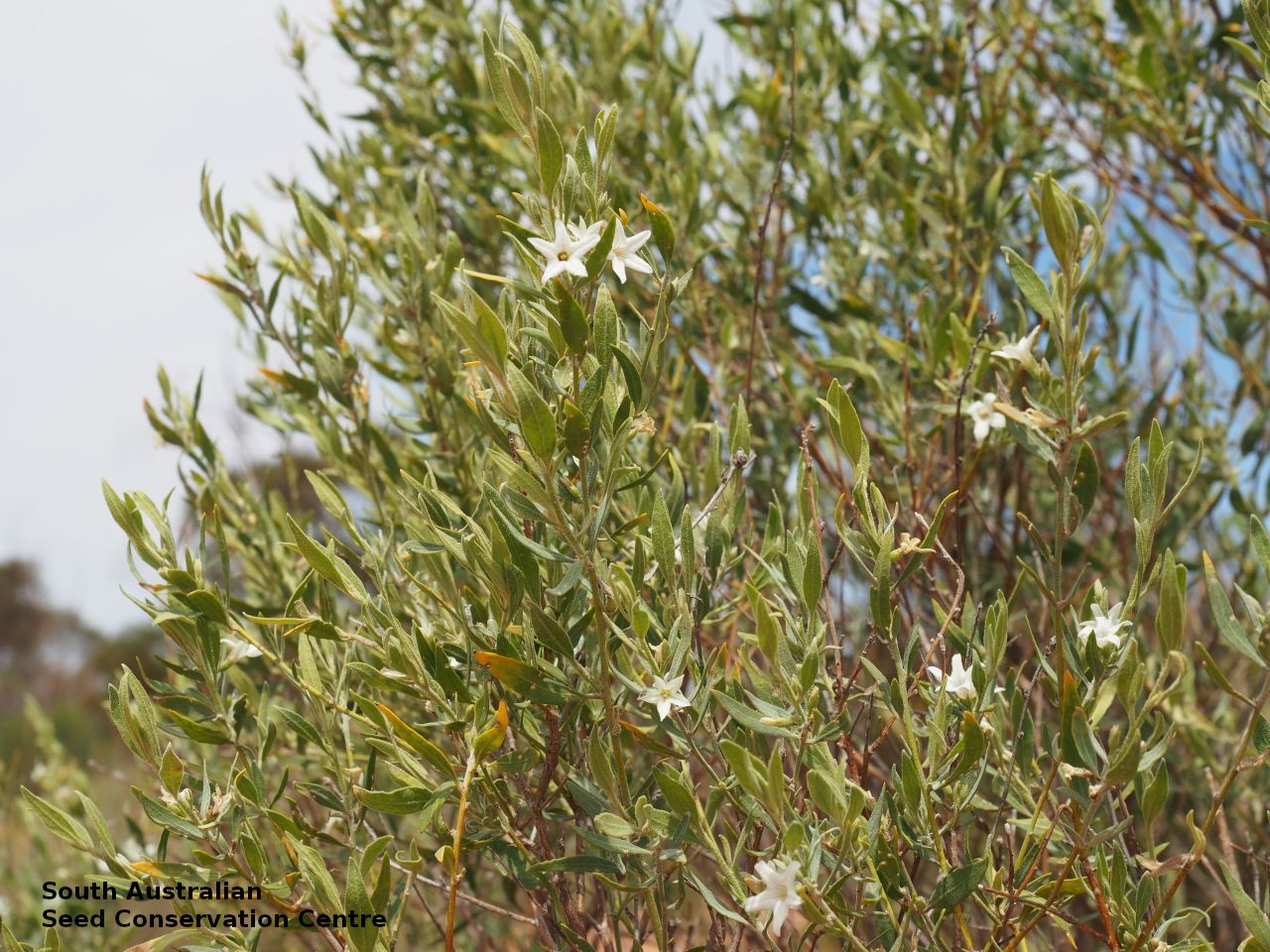
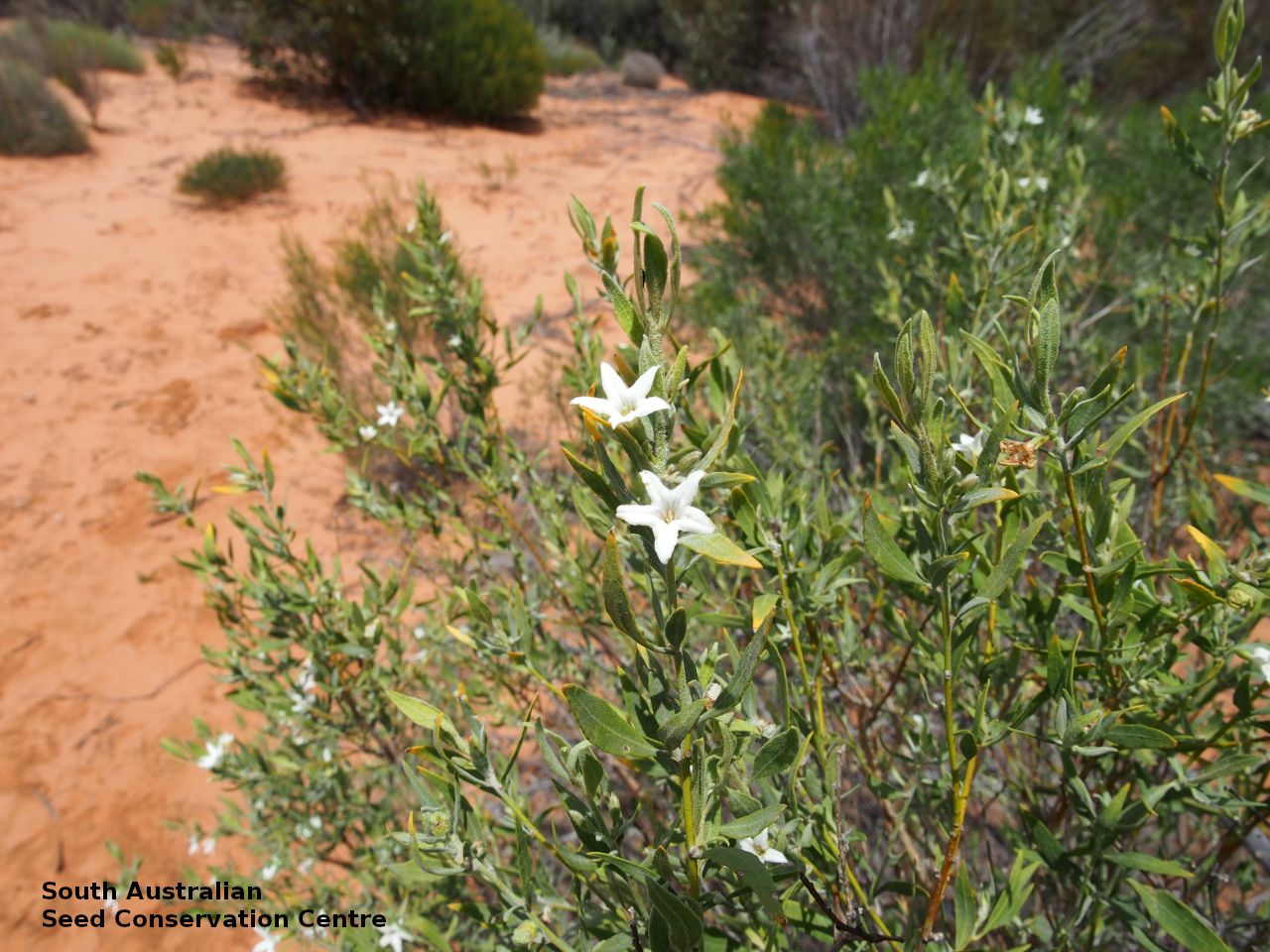
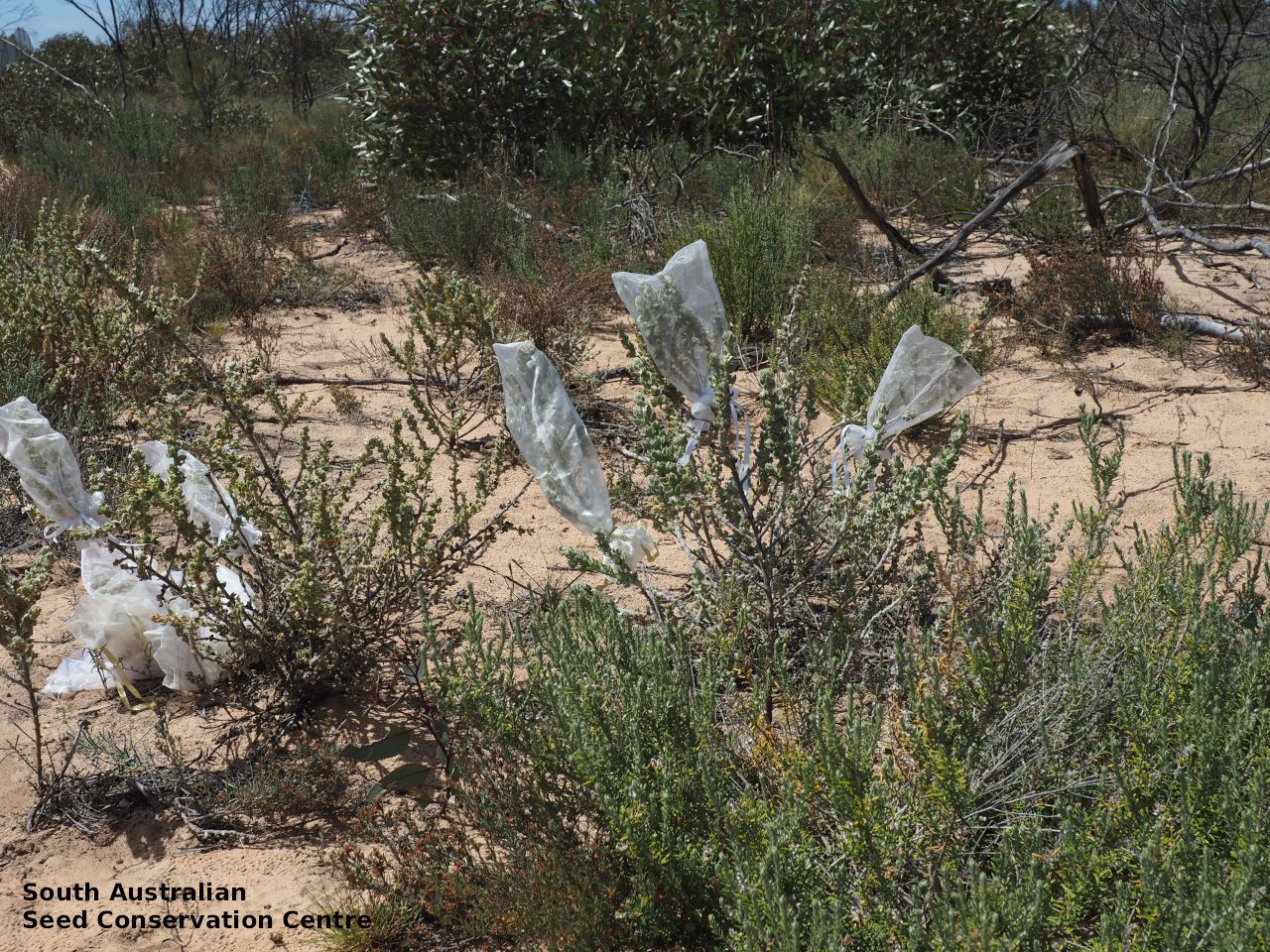
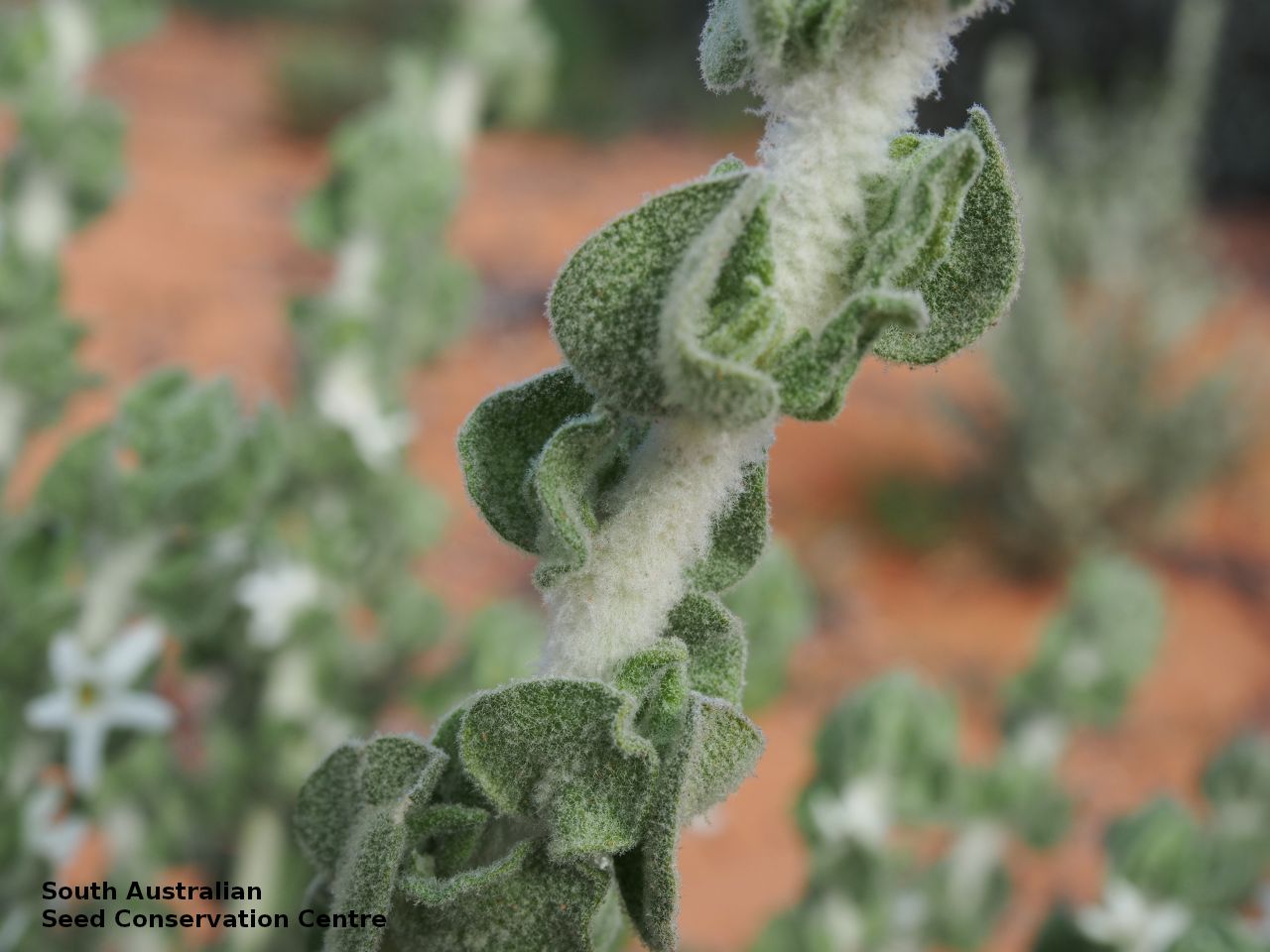
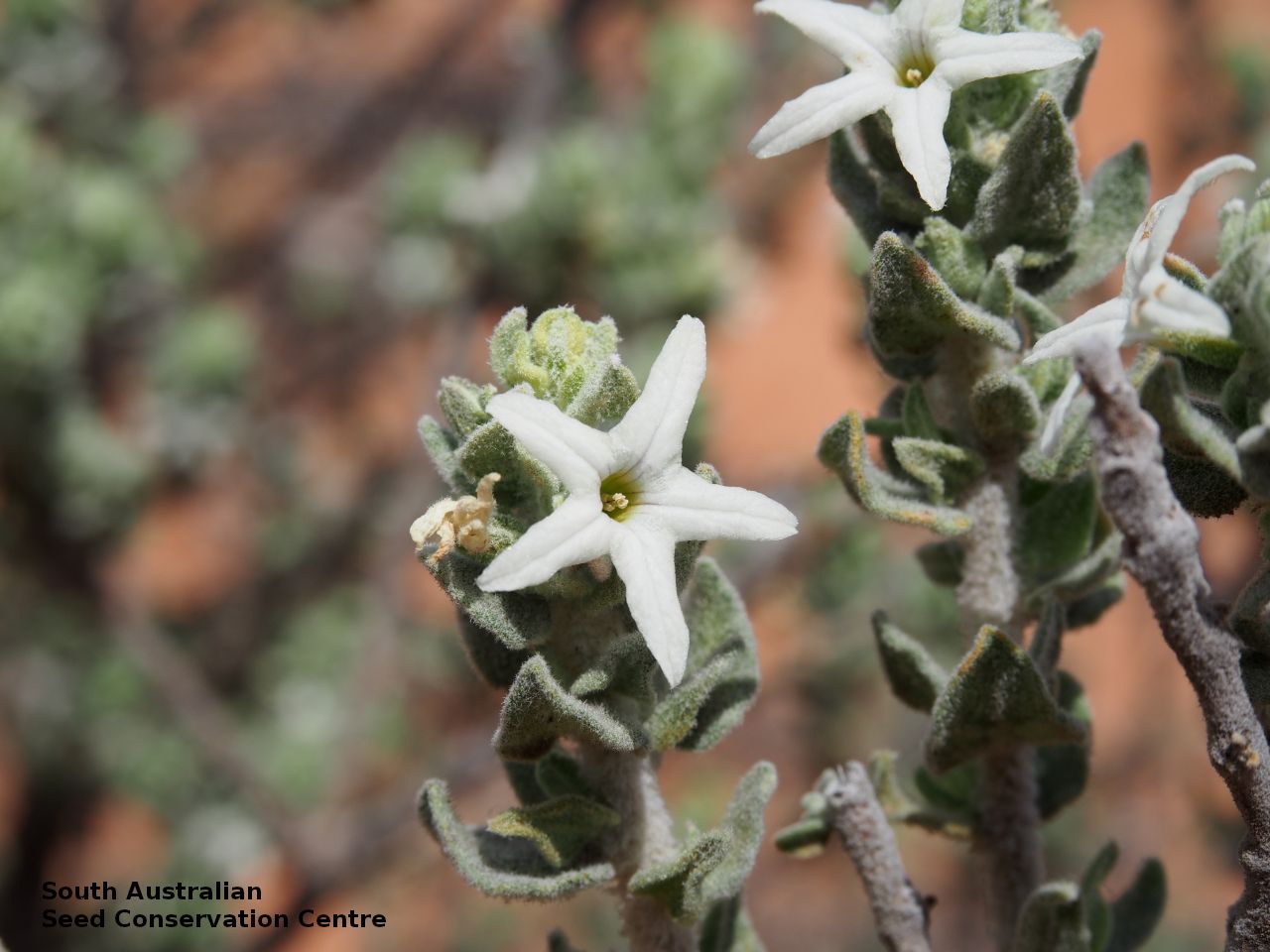
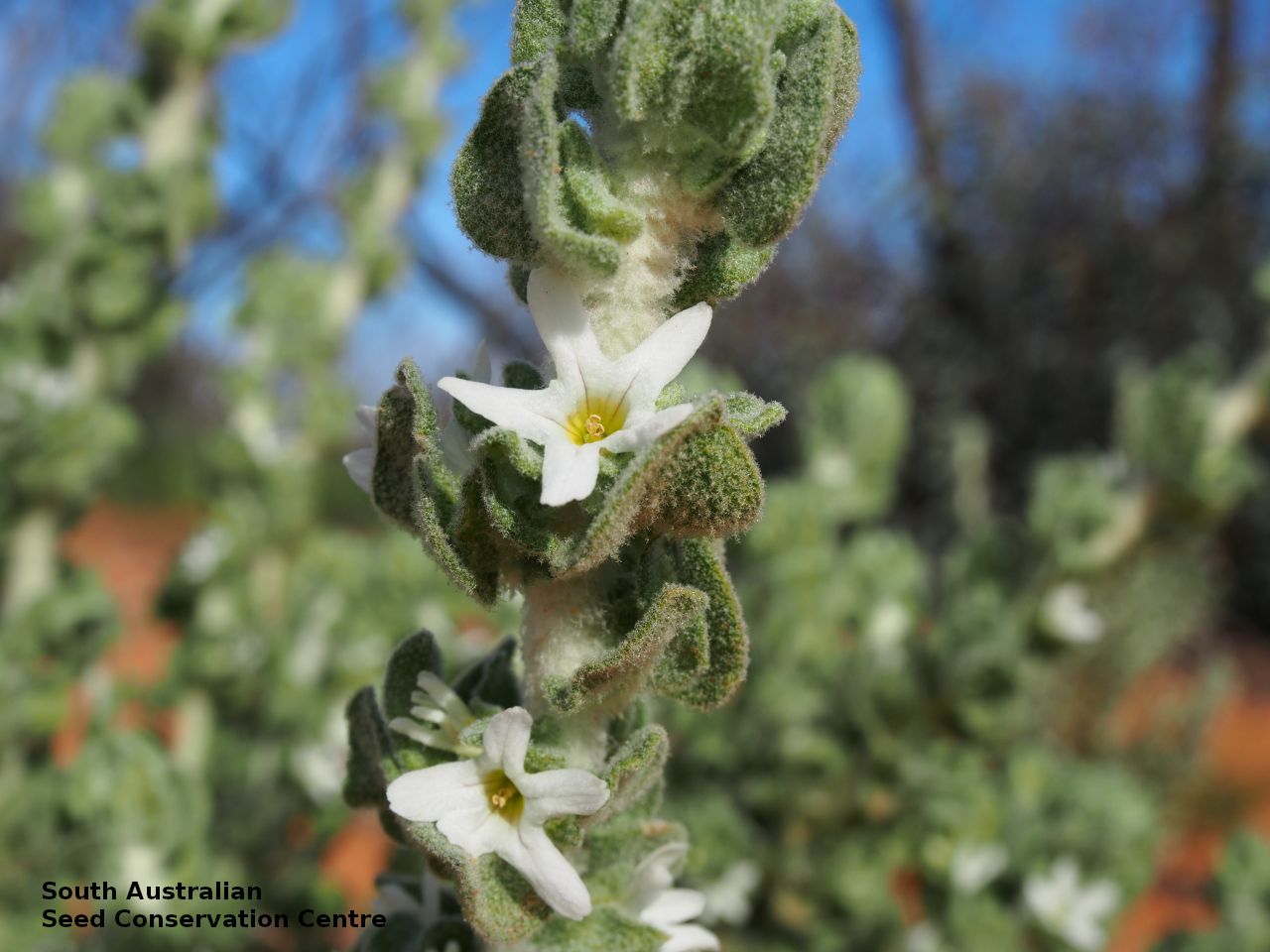
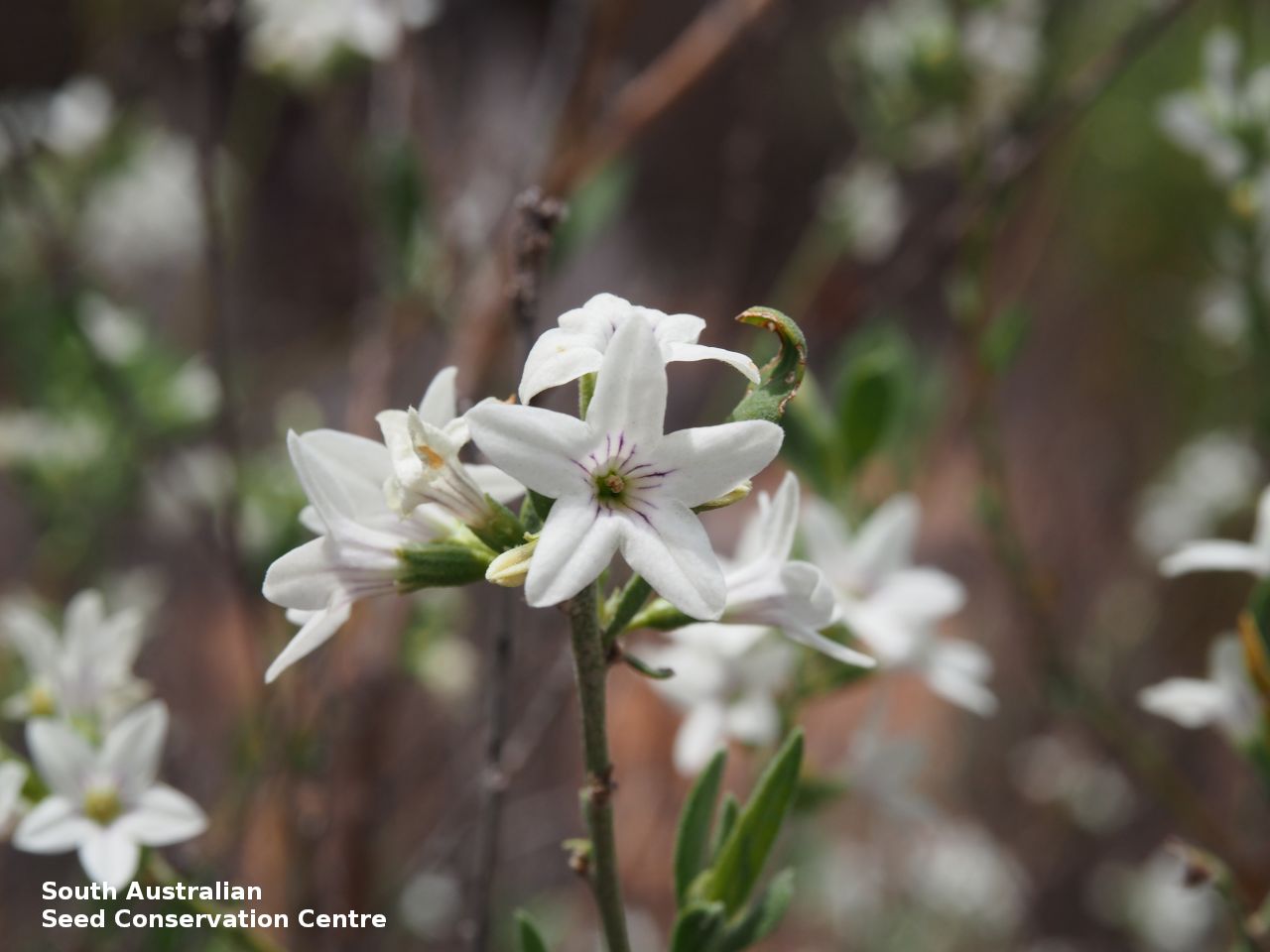
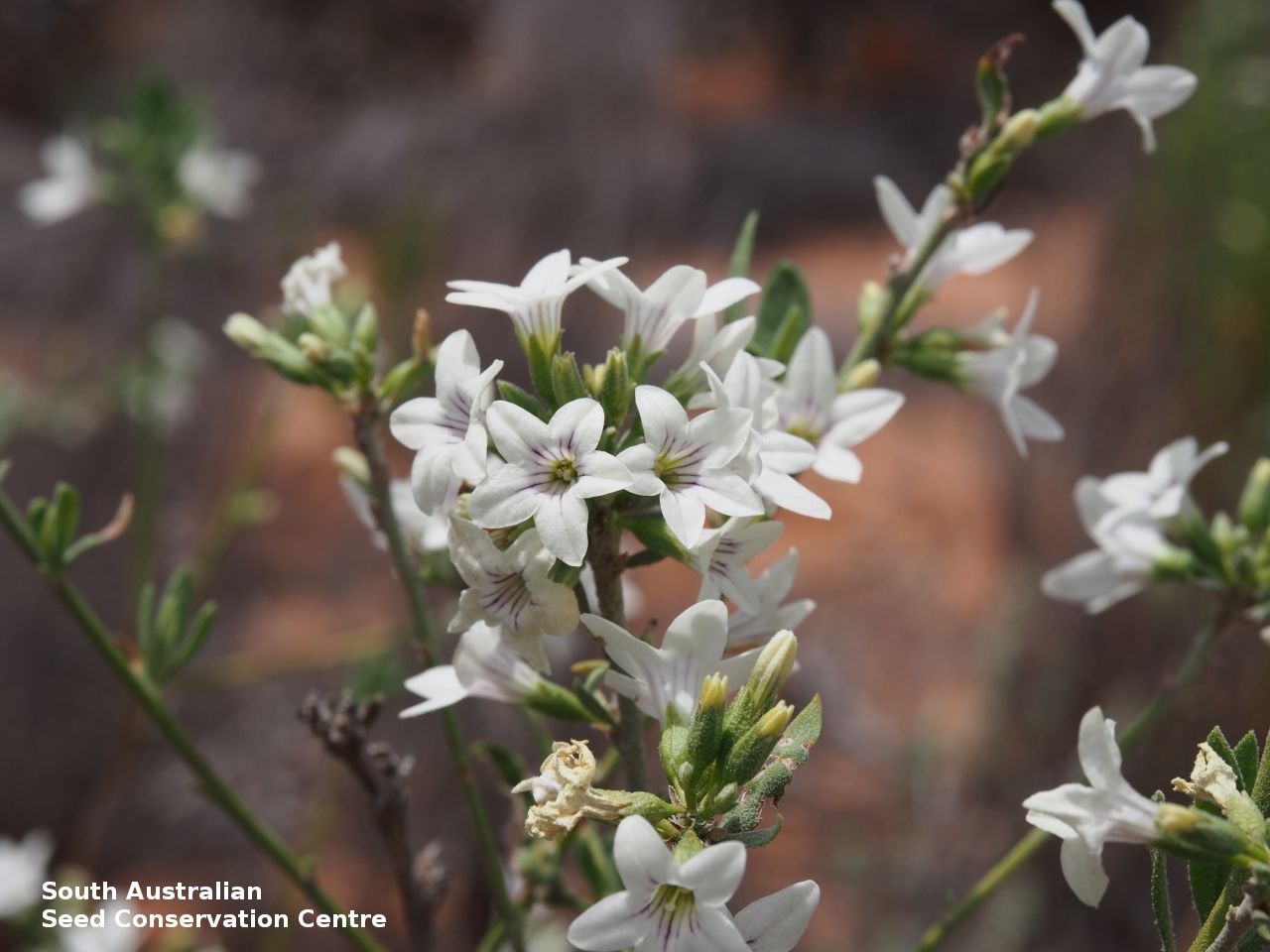
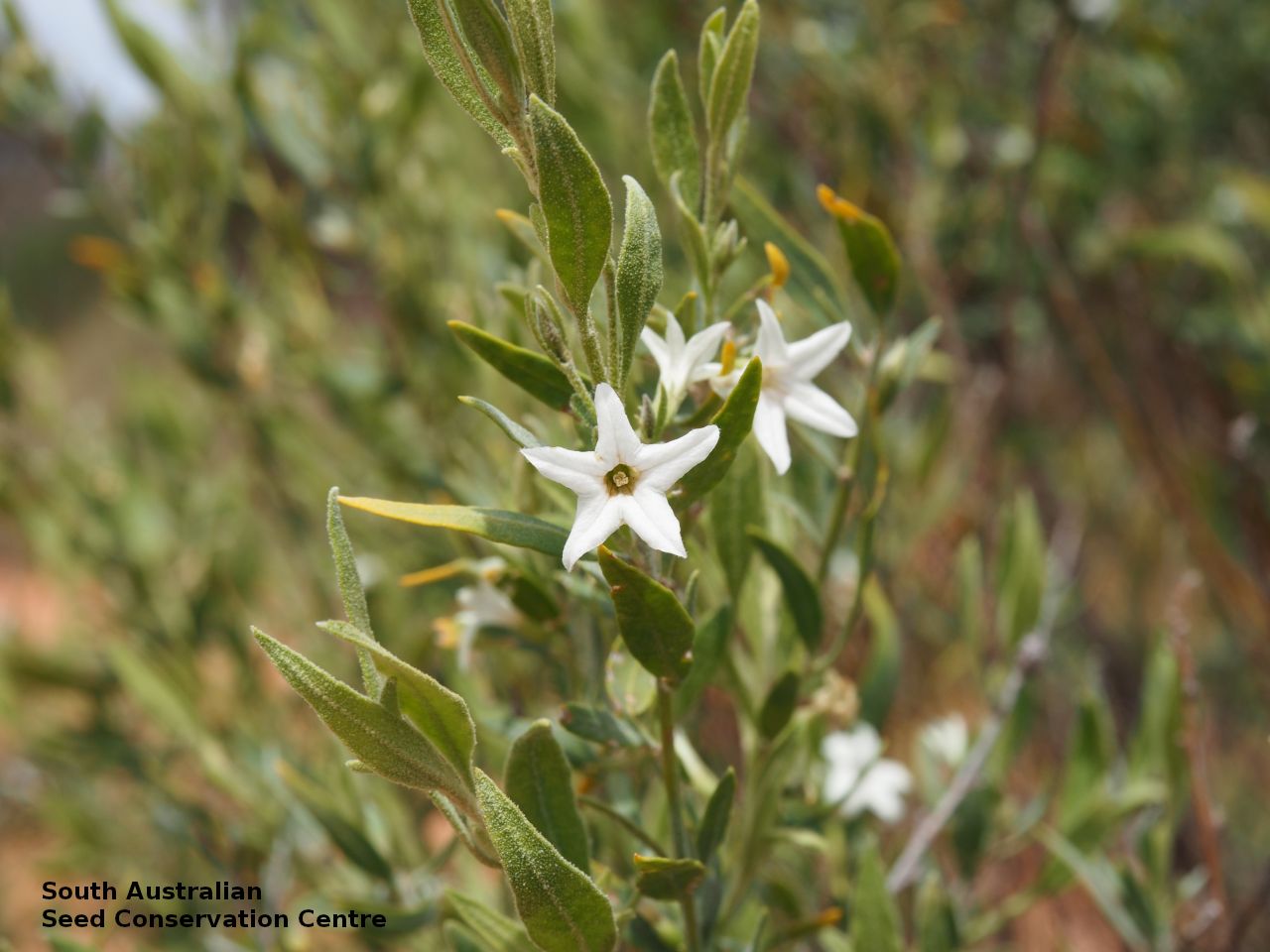
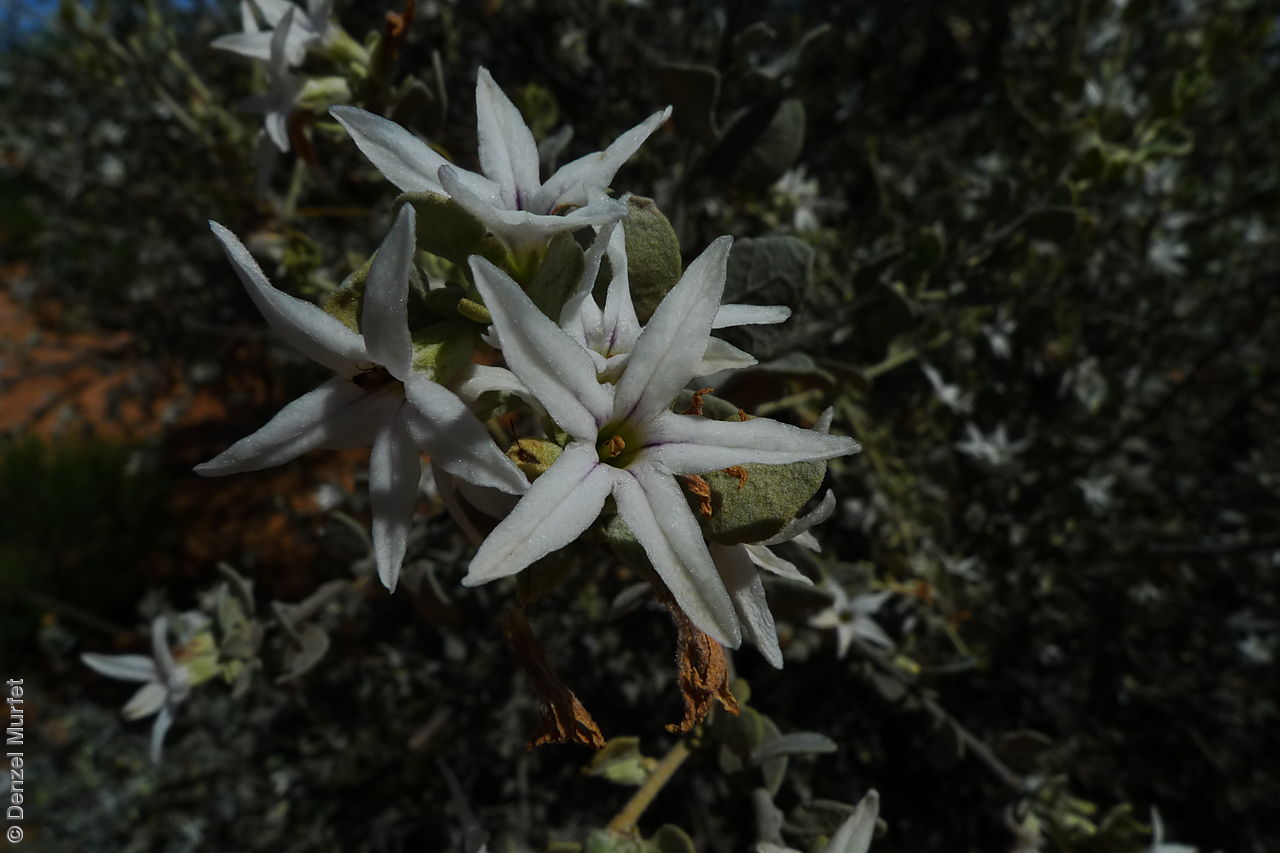
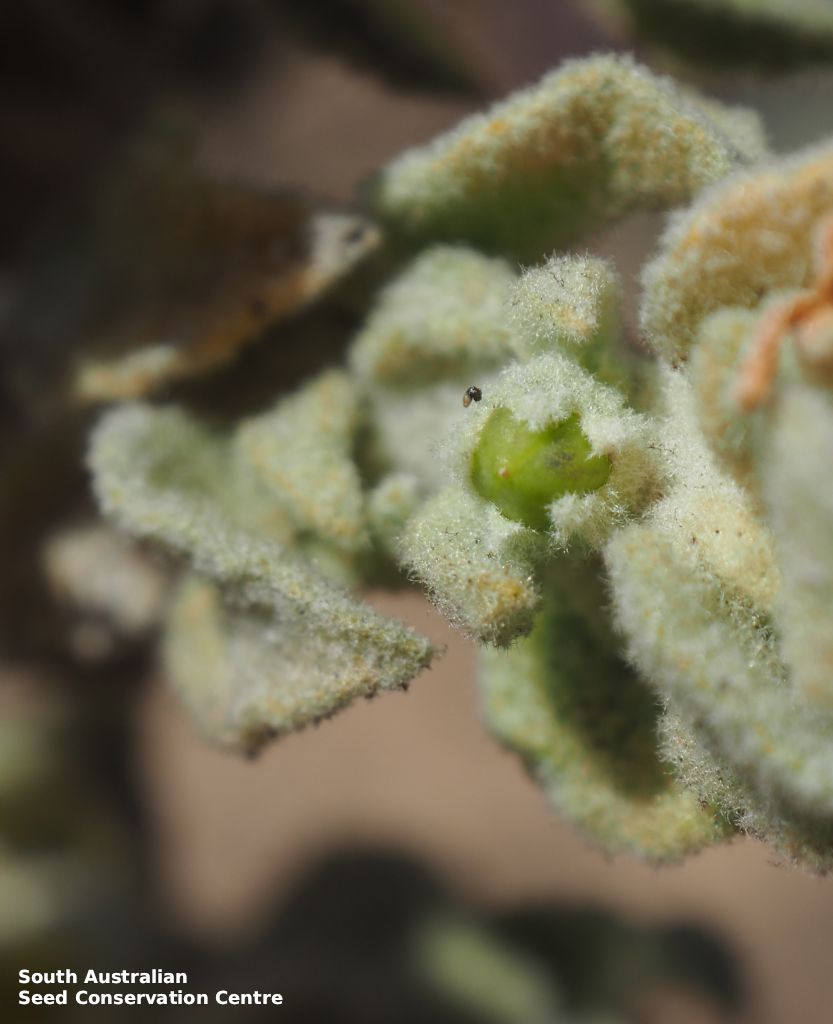
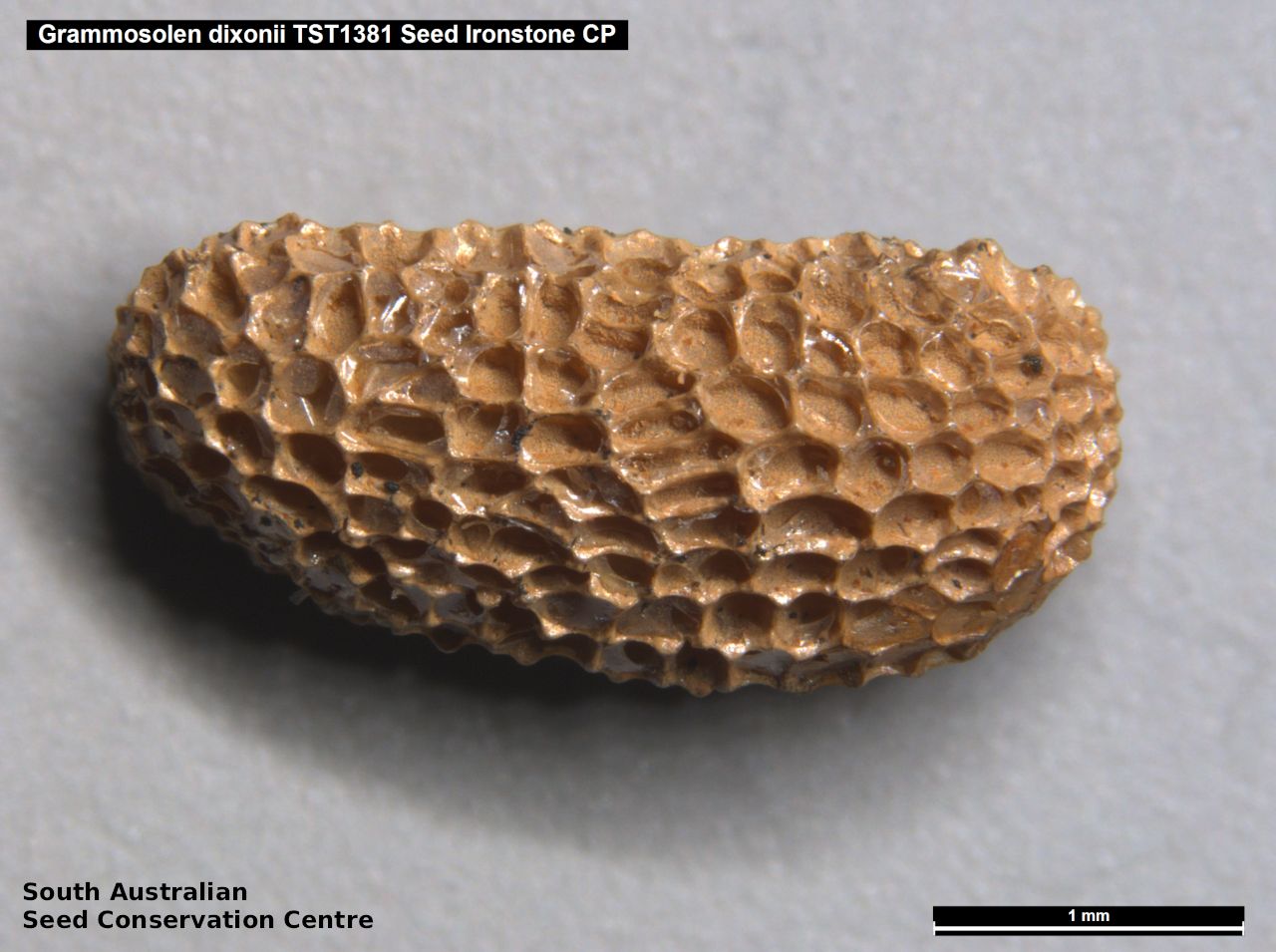
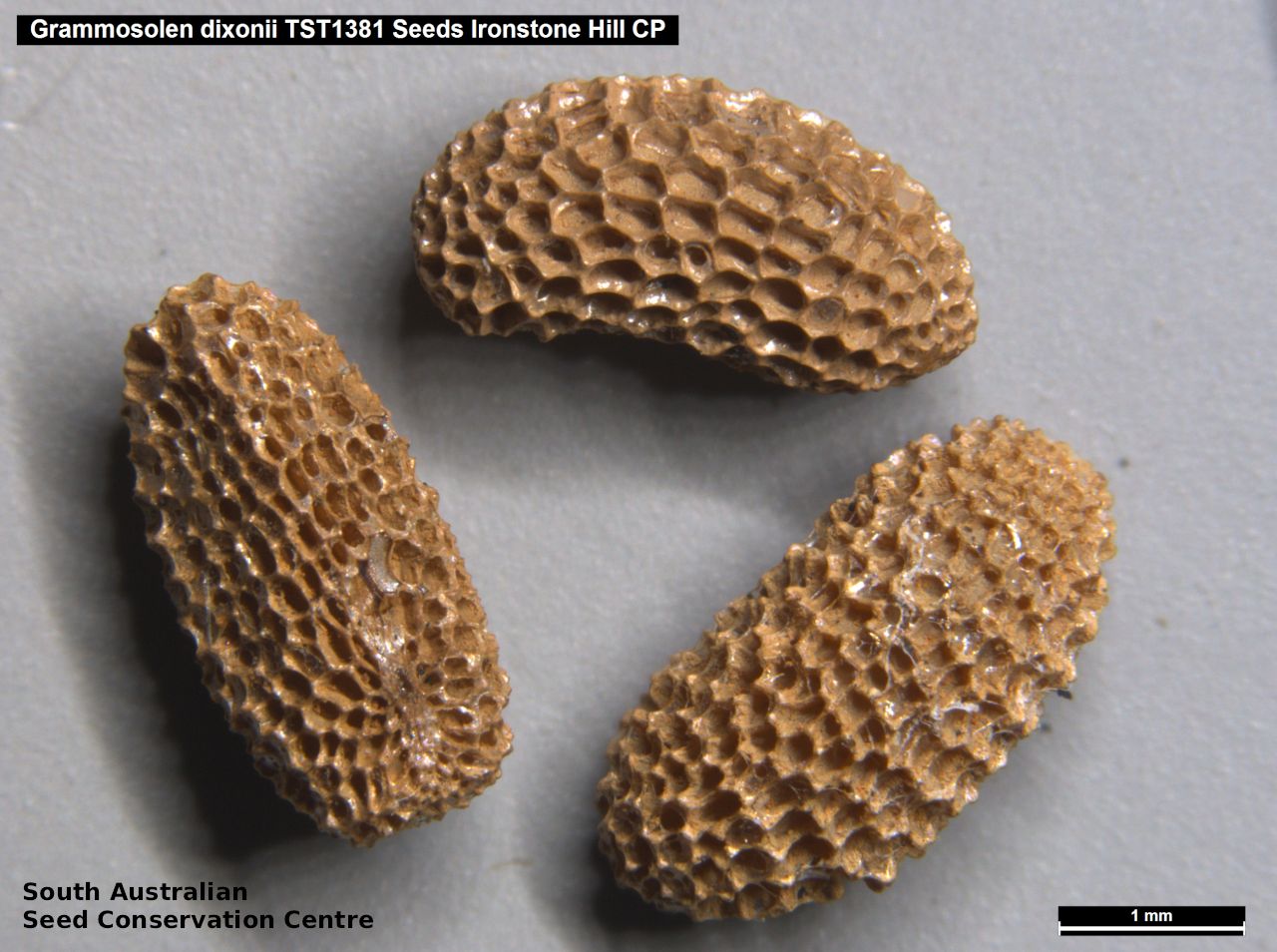

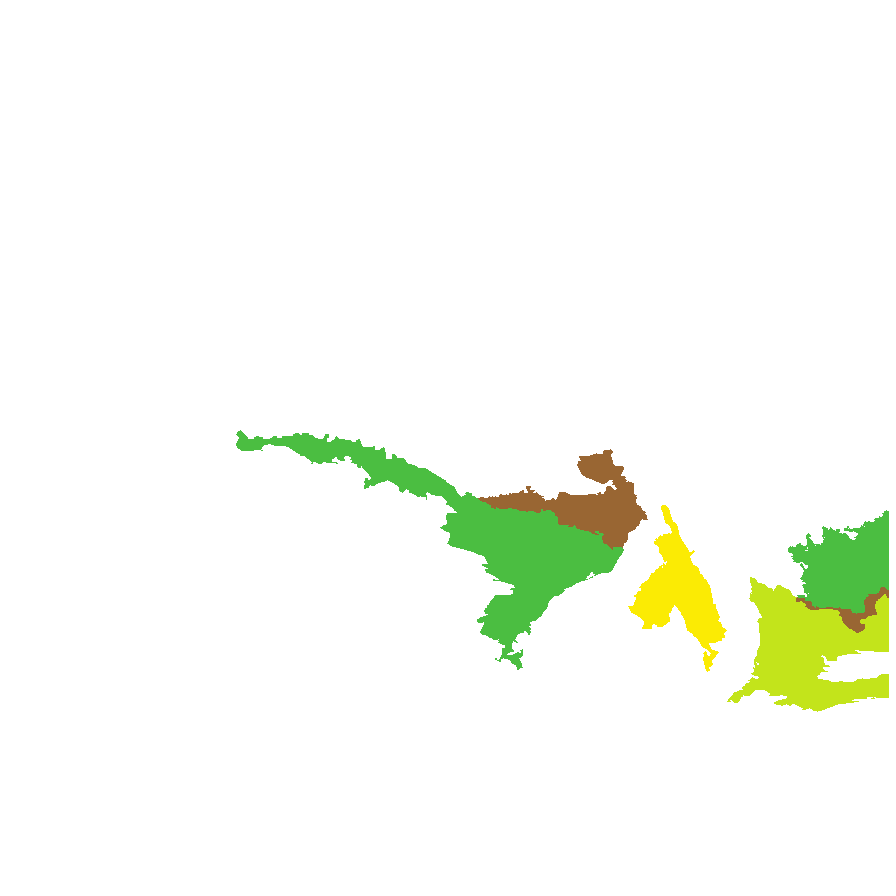
Botanical art
Prior names
Anthotroche blackii, partly
Newcastelia dixonii
Anthotroche blackii, partly
Etymology
Grammosolen from the Greek 'gramme' meaning a line or stroke of a pen and 'solen' meaning a pipe, alluding to the striated corolla tube. Dixonii named after Samuel Dixon (1841-1927), a naturalist and early environmentalist in South Australia and the collector of the type specimen.
Distribution and status
Endemic to South Australia and found on the north-eastern Eyre Peninsula, northern Yorke Peninsula and the Murray region, on deep sandy soils, often in disturbed mallee-spinifex associations. Native. Common in South Australia.
Herbarium regions: Eyre Peninsula, Northern Lofty, Murray, Yorke Peninsula
NRM regions: Eyre Peninsula, Northern and Yorke, South Australian Murray-Darling Basin
AVH map: SA distribution map (external link)
Plant description
Erect, spreading or sprawling shrub to 2 m high and 5 m diameter, covered in greyish woolly hairs. Leaves ovate-triangular to sub-cordate, to 20 mm long and 17 mm wide; densely hairy, entire to undulate. Inflorescence sometimes forming leafy spikes with 1–3 dull-white flowers with purple striations in the throat. Flowering between August and January. Fruits are brown sub-globular capsule to 4.5 mm long. Seed embryo type is linear fully developed.
Seed collection and propagation
Collect seeds between November and April. Collect capsules that are maturing, fat, turning a straw colour and contain hard brown seeds inside. Monitor the plants as the capsules will dry, split and disperse the seeds in a short space of time. Place the capsules in a tray and leave to dry for one to two weeks. Then rub the capsules gently by hand or with a rubber bung to dislodge the seeds. Use a sieve to separate the unwanted material. Store the seeds with a desiccant such as dried silica beads or dry rice, in an air tight container in a cool and dry place.
| Location | No. of seeds (weight grams) | Number of plants | Date collected | Collection number Collection location | Date stored | % Viability | Storage temperature |
|---|---|---|---|---|---|---|---|
| BGA | 800 (1.46 g) | 25+ | 21-Dec-2017 | TST1381 Eyre Peninsula | 30-Jun-2018 | 80% | -18°C |
Number of plants: This is the number of plants from which the seeds were collected.
Collection location: The Herbarium of South Australia's region name.
% Viability: Percentage of filled healthy seeds determined by a cut test or x-ray.